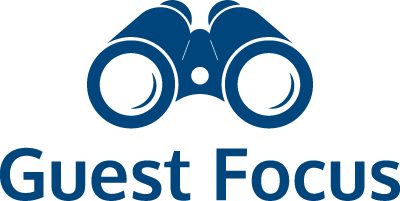The Hidden Commission Costs That Destroy Tour Operator Profits
This is part 4 of our Pricing Series. You can watch the whole series here, or start with part 1 here.
“Direct bookings are free while OTA commissions are expensive.”
This misconception might be costing you thousands of dollars every month. I’ve watched tour operators build entire business strategies around this myth, refusing profitable partnerships and limiting their growth potential because they believe commission-free equals cost-free.
The truth is messier, more nuanced, and ultimately more profitable once you understand it.
The True Cost of “Free” Direct Bookings
I’ve heard more than a few operators tell me they refuse all OTA partnerships. “Why give away 25% when I can get bookings for free through my website?” they ask.
If this is your first thought too, calculate your actual marketing costs. Not the obvious ones like Google Ads, but everything: website development and maintenance, SEO optimization efforts, content creation, email marketing platforms, social media management, staff time spent on marketing tasks, photography and videography, review management systems, booking software fees.
These numbers add up. You’re likely spending 18% of your annual revenue on direct marketing efforts. Those “free” bookings are costing you nearly as much as Viator’s commission – but with none of the guaranteed results.
This isn’t unusual. Most operators spend between 12-15% of annual revenue on direct customer acquisition. Some spend more. And unlike OTA commissions, these are often upfront costs with no guarantee of return. You pay for that Facebook campaign whether it brings bookings or not. You pay for SEO optimization hoping it eventually works. You pay for website updates whether traffic converts or disappears.
Meanwhile, OTAs operate on pure performance. They only get paid when they deliver a paying customer. No upfront costs. No marketing risk. No wondering if your investment will convert.
Plus, they provide sophisticated marketing reach and access to customers you’d never find on your own – international travelers browsing in their native languages, last-minute bookers comparing options, travelers who trust the platform’s booking security.
Understanding the Distribution Ecosystem
The modern tour operator navigates a complex ecosystem of distribution channels, each with its own economics and advantages. Understanding these channels isn’t just about knowing commission rates – it’s about recognizing the unique value each brings to your business.
Online Travel Agencies like Viator and GetYourGuide typically charge 25-30% commission. Yes, it’s high. But consider what you’re getting: sophisticated marketing algorithms, global reach, multilingual customer service, payment processing, fraud protection, and access to millions of travelers who start their trip planning on these platforms. They’ve spent millions building trust and convenience that you can leverage instantly.
Travel agents, often dismissed as relics, remain powerful partners for certain markets. They typically charge 10-15% commission while providing access to high-value clients who prefer personalized service. These aren’t budget travelers comparing prices – they’re customers willing to pay premium rates for curated experiences. One travel agent relationship can bring you dozens of quality bookings annually.
Local partners form the backbone of destination-based distribution. Hotels, visitor centers, and complementary attractions typically charge 10-15% commission for targeted local recommendations. These partners know their guests intimately. When a concierge recommends your tour, it carries weight that no online ad can match. The trust is pre-built, the audience is qualified, and the conversion rates often exceed any other channel.
Direct sales through your website, phone, and email remain crucial. They carry no commission but, as we’ve established, they’re far from free. The real advantage isn’t cost savings – it’s control. You own the relationship, gather customer data, control the booking experience, and build your brand directly.
The Blended Commission Revolution
Here’s where many operators fail catastrophically: they price for direct sales only, then lose money on every indirect booking. They create what I call “channel chaos” – different margins for different partners, constant negotiation, and ultimately, unsustainable operations.
The solution transforms how you think about pricing entirely. Instead of treating each channel separately, you calculate a blended commission rate across all sales sources. This weighted average becomes the foundation of sustainable pricing.
Let me walk you through exactly how this works with a real example from our coaching program. A food tour operator came to us with a common problem: they were killing it with direct sales but bleeding money on OTA bookings. Their tour was priced at $105, which gave them healthy margins on direct bookings. But Viator was bringing them significant volume at 25% commission, and those same tours were operating at a loss.
We mapped their distribution: 40% direct sales at 0% commission, 30% through Viator at 25%, 20% through hotel partnerships at 10%, and 10% through a local visitor center at 15%.
The math revealed their blended commission rate: (40% × 0%) + (30% × 25%) + (20% × 10%) + (10% × 15%) = 11% average commission across all sales.
Knowing that blended commission rate changed everything. Instead of panicking about Viator’s 25% or celebrating direct sales at 0%, they now had one number to build into their base pricing. Every tour, regardless of booking source, needed to accommodate this 11% average commission.
The Pricing Transformation
The impact on actual pricing was dramatic but necessary. That $105 food tour needed to become $125 to maintain their target 10% net profit margin after accounting for the blended commission rate. Here’s how the math broke down:
At $105 with no commission calculations, they showed a healthy 60% gross margin and 10% net profit on direct sales. Beautiful numbers – until you added distribution. Once that 11% blended commission hit, their net profit turned into an 8% loss. They were literally paying to run tours through partners.
By raising the price to $125 and building in the commission from the start, they restored their 10% net profit margin across ALL channels. Direct bookings became more profitable (no commission on the higher price), while partner bookings finally broke even or generated profit.
The initial fear was customer resistance to the 19% price increase. Instead, bookings actually increased. The higher price signaled premium value, attracted quality-focused customers, and allowed them to invest in experience improvements that justified the cost.
Strategic Distribution Planning
Building commission into pricing isn’t just about survival – it’s about strategic growth. When every channel is profitable, you can make distribution decisions based on strategy, not desperation.
Diversification becomes possible when you’re not dependent on a single channel. If direct marketing falters, OTA partnerships sustain you. If OTA algorithms change, local partnerships provide stability. If hotel relationships shift, your direct marketing captures the slack. This resilience is impossible when only one channel is profitable.
Scalability emerges when you can say yes to partnership opportunities. That travel agent wanting to book groups? You can accommodate them profitably. The new OTA targeting your niche? You can test without risking margins. The hotel chain wanting preferred partner status? You can negotiate from strength, not need.
Flexibility in negotiations transforms your partnership discussions. When a 20% commission request arrives, you can evaluate it against your blended rate, not your survival. You might accept higher commissions for high-value channels or negotiate lower rates for volume commitments – all while maintaining overall profitability.
Implementation Roadmap
Transforming your pricing model requires a systematic approach, not a dramatic overhaul. Start by auditing your current channels with brutal honesty. What percentage of bookings comes from each source? Include those “friend of a friend” referrals and track their unofficial commission (dinners, favors, reciprocal bookings).
Next, determine your ideal distribution mix based on your market and capabilities. A city tour operator might thrive with 60% OTA bookings, while a specialized photography tour might target 70% direct sales. There’s no universal formula – only what works for your specific situation.
Calculate your blended rate using the weighted average formula. This number becomes your north star for pricing decisions. Every tour, package, and seasonal special needs to accommodate this baseline commission.
Adjust your base pricing to build in the blended commission from day one. This might mean significant increases – 20% or more isn’t unusual. Remember, you’re not raising prices arbitrarily; you’re finally pricing for reality instead of hope.
Monitor and optimize continuously. Your channel mix will evolve, commission rates might change, and new partners will emerge. Quarterly reviews keep your blended rate accurate and your pricing sustainable.
Overcoming Resistance
The objections are predictable and surmountable. “My competitors charge less!” you might think. Yes, and they’re probably losing money on every indirect sale. You’re not pricing for competition – you’re pricing for profitability. Let your competition subsidize their OTA partners while you build a sustainable business.
“Customers will balk at higher prices!” Perhaps some will. But experience consistently shows that proper pricing attracts better customers, not fewer ones. Quality-focused travelers often use price as a value signal. Your $125 food tour suggests a premium experience that your competitor’s $85 tour can’t match.
“I’ll just stick to direct sales only!” This limiting belief constrains growth to your marketing budget and expertise. You’re essentially saying, “I’ll only grow as fast as I can personally sell.” Distribution partners multiply your reach exponentially – but only if you price to accommodate them.
The Path Forward
The tour operators succeeding today haven’t avoided distribution commissions – they’ve embraced them strategically. They understand that sustainable pricing isn’t about minimizing channel costs but optimizing channel mix for profitable growth.
Stop treating distribution as a necessary evil. Start seeing it as a growth engine that requires proper fuel (pricing) to run efficiently. When you price correctly from the beginning, every channel becomes an opportunity rather than a compromise.
Your business deserves pricing that supports growth, not limits it. The math might surprise you, but it won’t lie. The question isn’t whether to work with distribution partners – it’s whether you’re pricing appropriately to make those partnerships profitable.
Download our free pricing calculator at guestfocus.com/pricing to see exactly how commission planning affects your specific tours. Join the operators who’ve stopped fighting distribution economics and started leveraging them for sustainable growth.
Want help creating more engagement (and stellar reviews) for your tours? Book a free 45-minute strategy call with us today!




